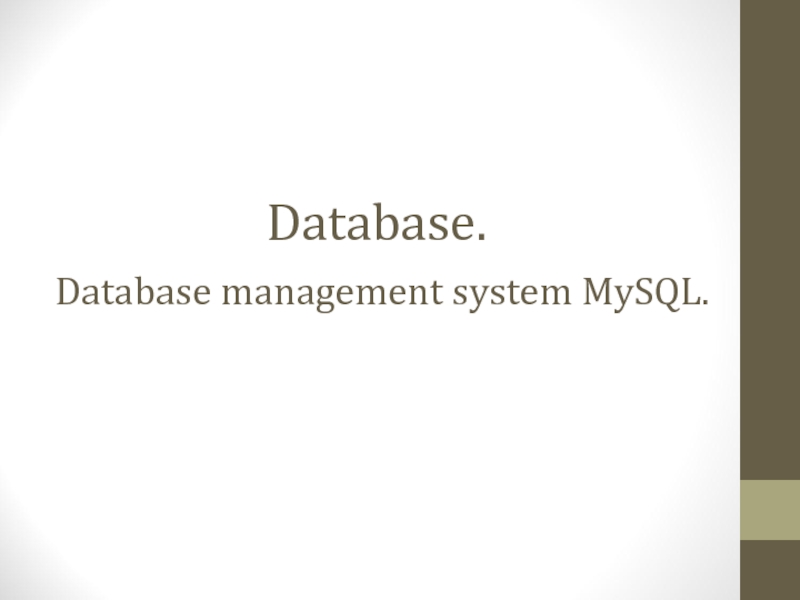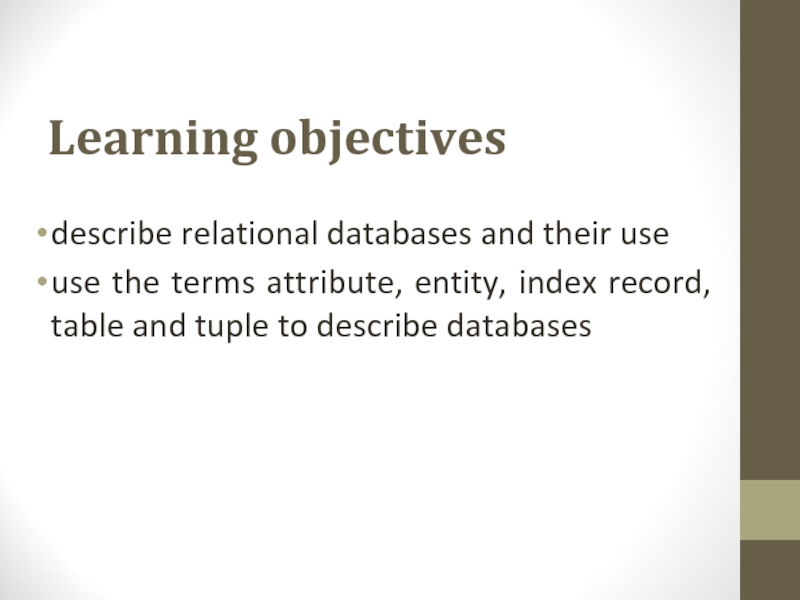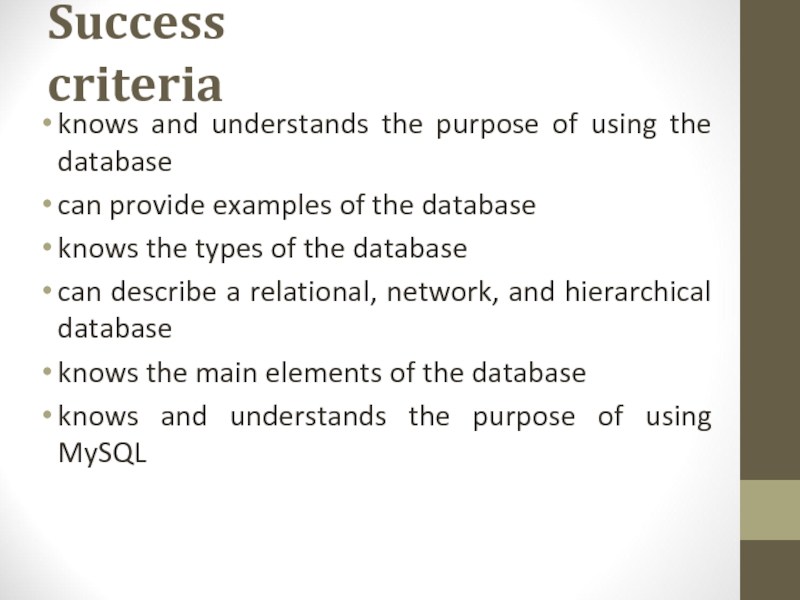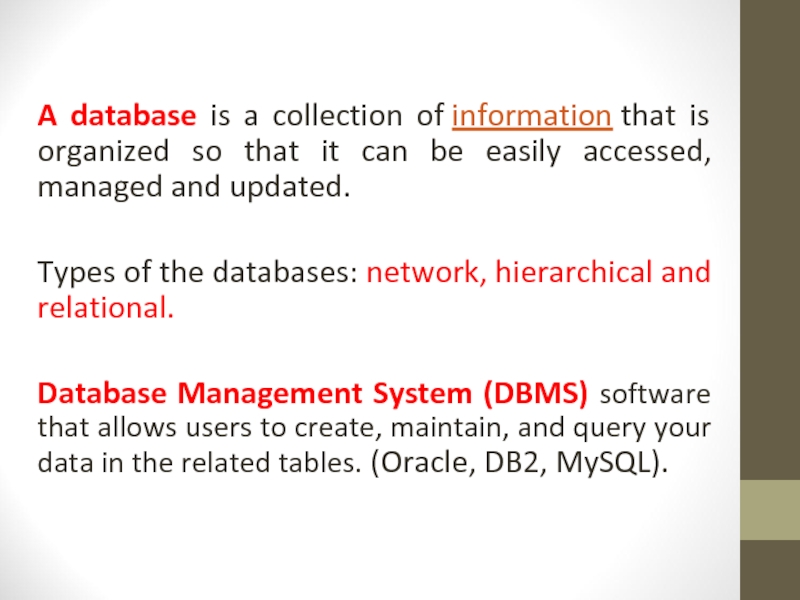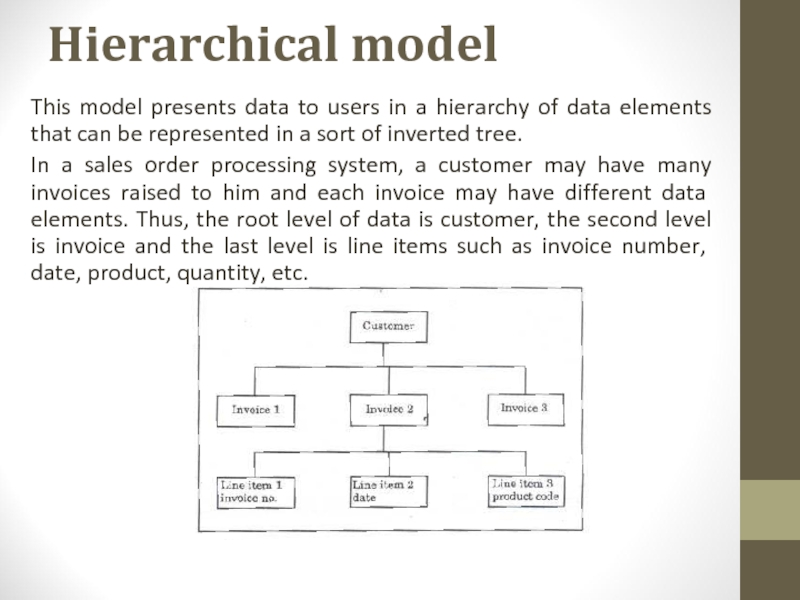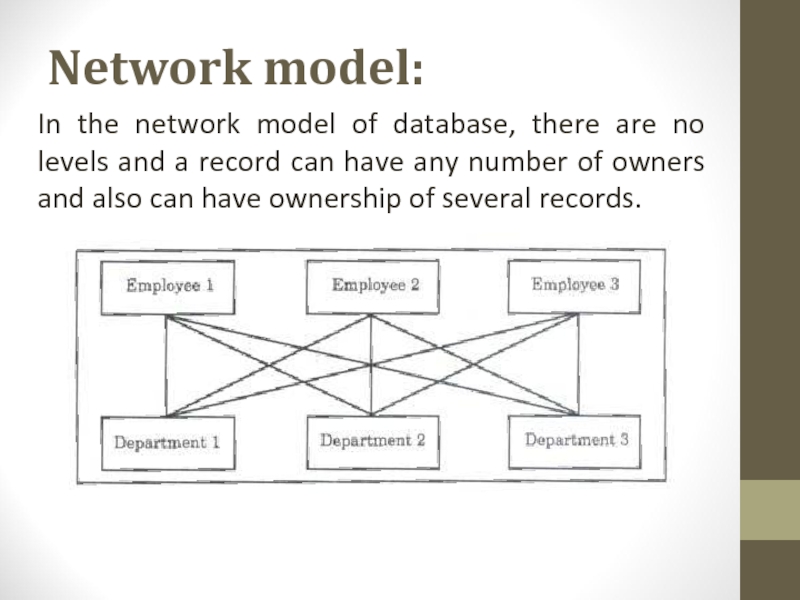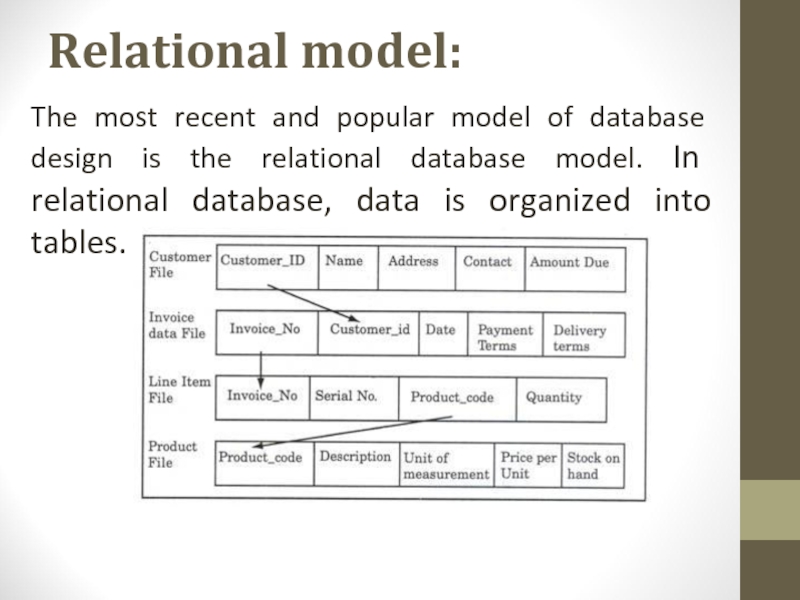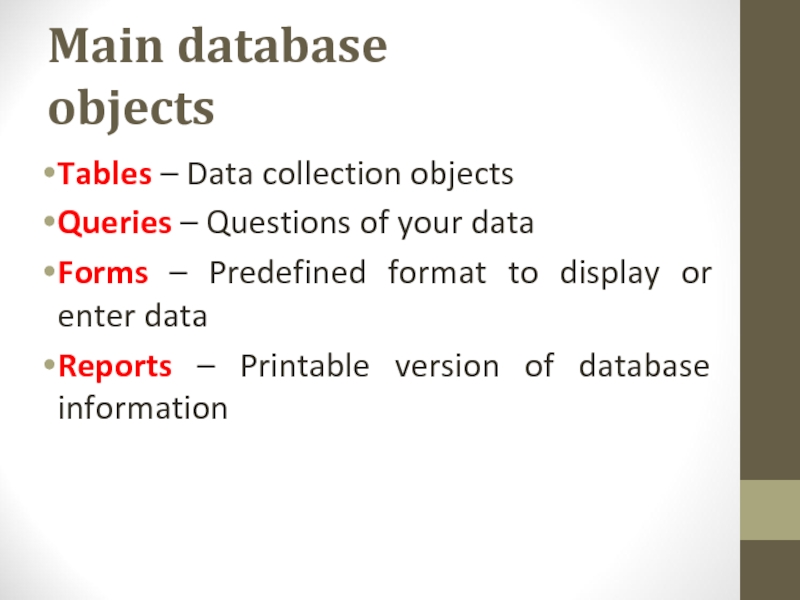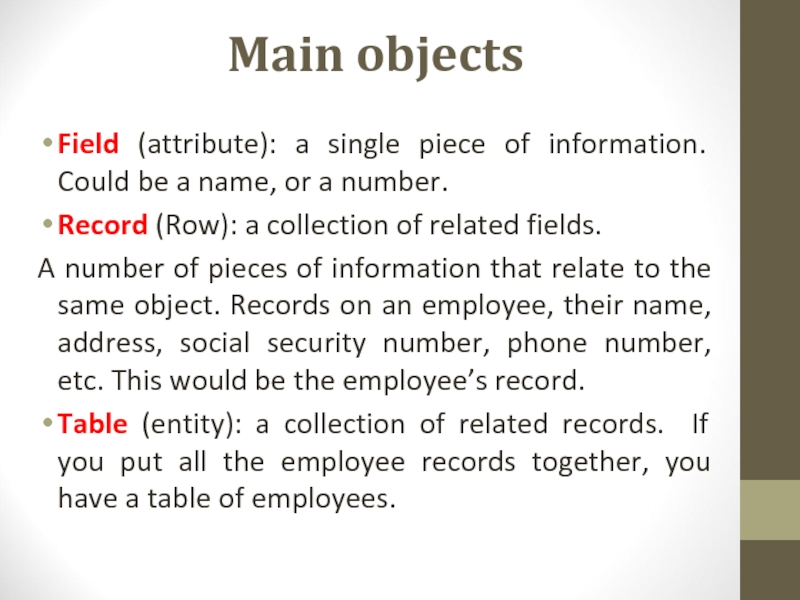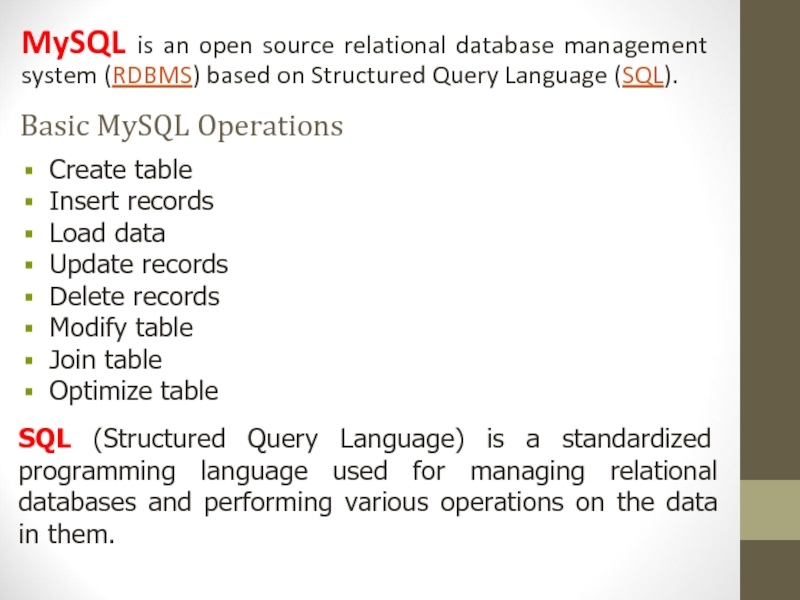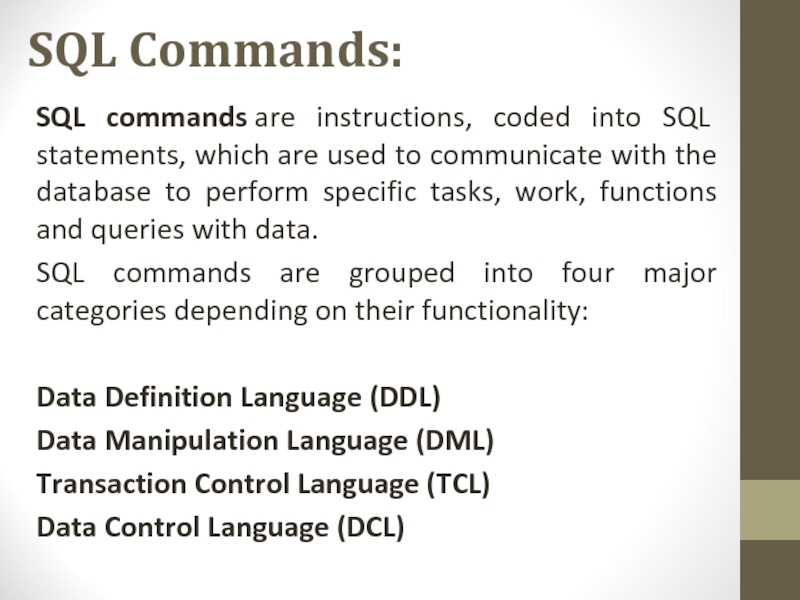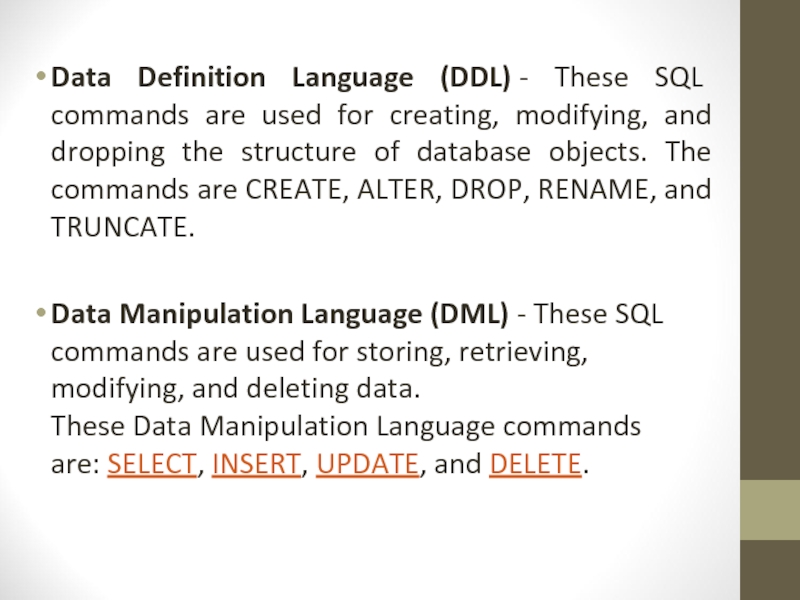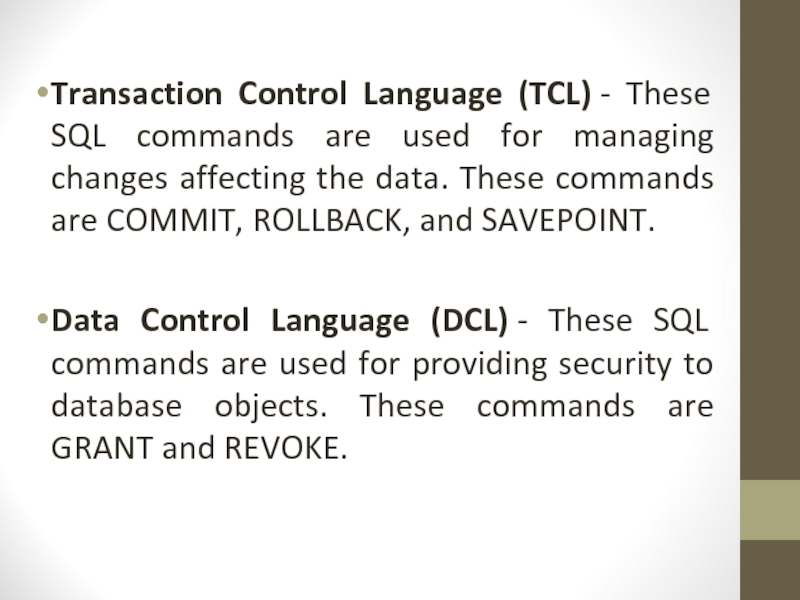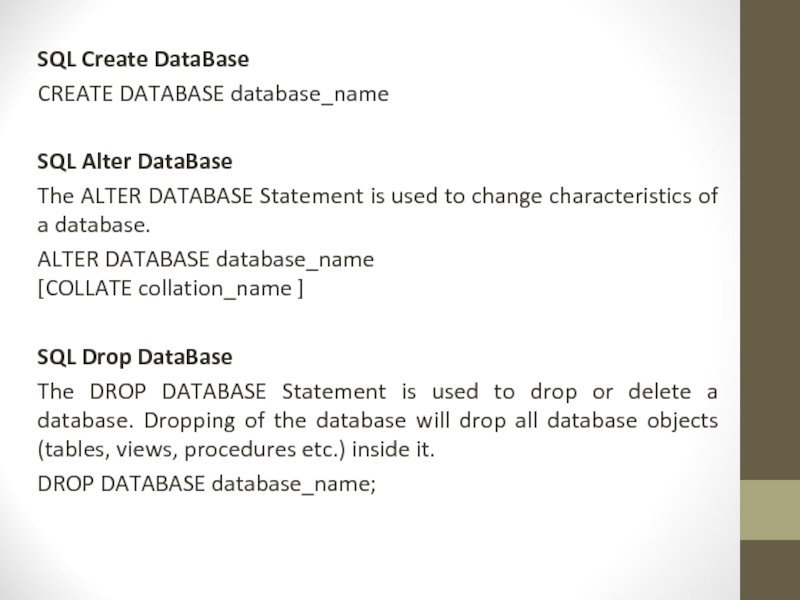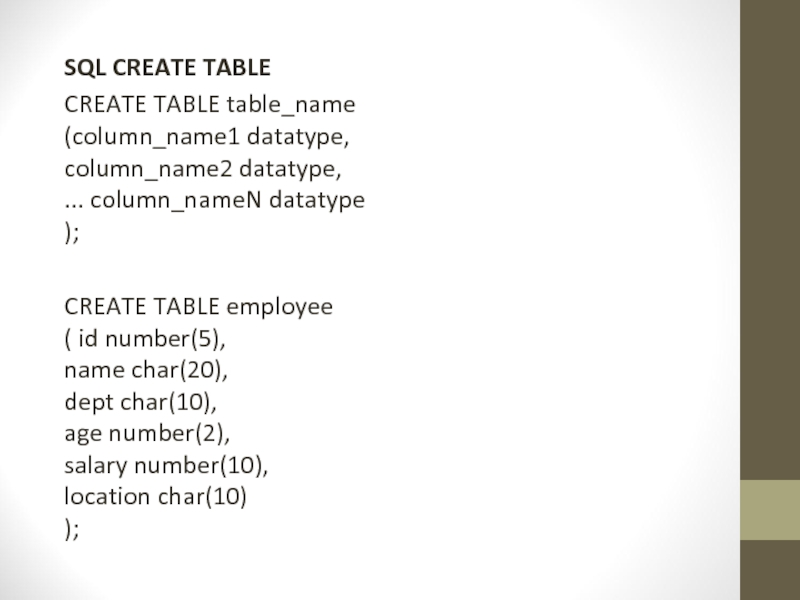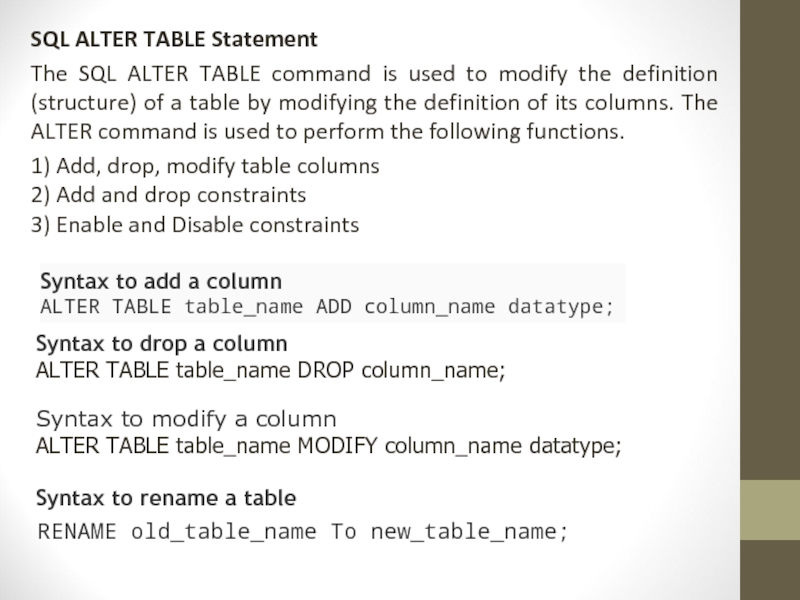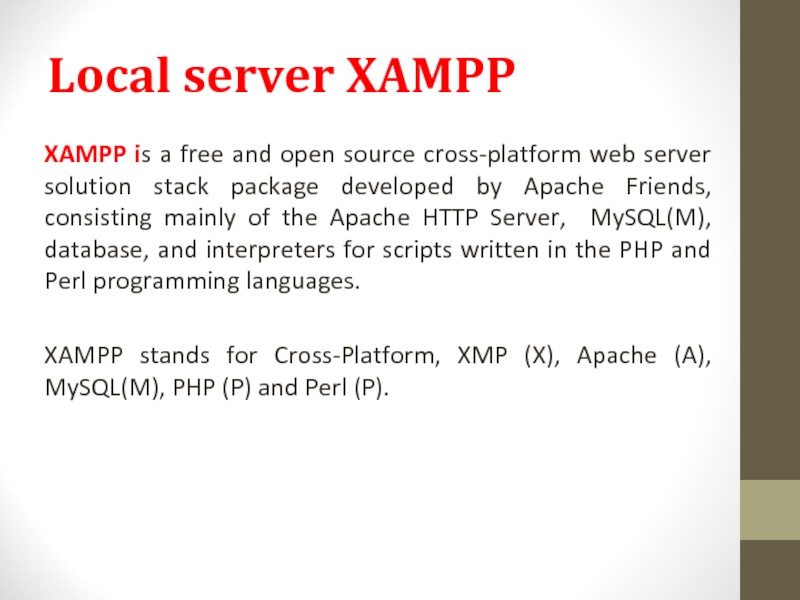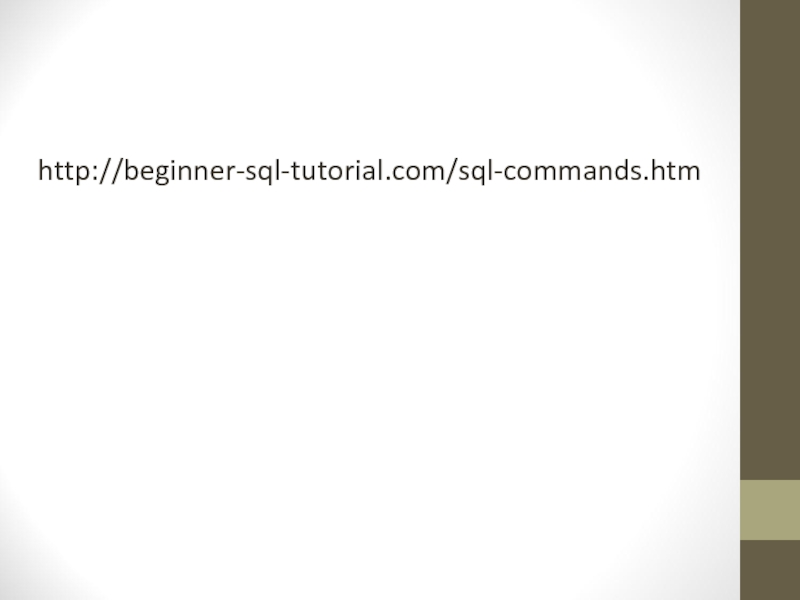- Главная
- Разное
- Дизайн
- Бизнес и предпринимательство
- Аналитика
- Образование
- Развлечения
- Красота и здоровье
- Финансы
- Государство
- Путешествия
- Спорт
- Недвижимость
- Армия
- Графика
- Культурология
- Еда и кулинария
- Лингвистика
- Английский язык
- Астрономия
- Алгебра
- Биология
- География
- Детские презентации
- Информатика
- История
- Литература
- Маркетинг
- Математика
- Медицина
- Менеджмент
- Музыка
- МХК
- Немецкий язык
- ОБЖ
- Обществознание
- Окружающий мир
- Педагогика
- Русский язык
- Технология
- Физика
- Философия
- Химия
- Шаблоны, картинки для презентаций
- Экология
- Экономика
- Юриспруденция
Database. Database management system MySQL презентация
Содержание
- 1. Database. Database management system MySQL
- 2. Learning objectives describe relational databases and
- 3. Success criteria knows and understands the purpose
- 4. A database is a collection of information that is
- 5. Hierarchical model This model presents data
- 6. Network model: In the network model
- 7. Relational model: The most recent
- 8. Main database objects Tables – Data collection
- 9. Main objects Field (attribute): a single piece
- 10. MySQL is an open source relational database
- 11. SQL Commands: SQL commands are instructions,
- 12. Data Definition Language (DDL) - These SQL commands
- 13. Transaction Control Language (TCL) - These SQL commands
- 14. SQL Create DataBase CREATE DATABASE database_name
- 15. SQL CREATE TABLE CREATE TABLE table_name (column_name1
- 16. SQL ALTER TABLE Statement The SQL ALTER
- 17. Local server XAMPP XAMPP is a free
- 18. Click Apache – MySQL – Start. Where
- 19. http://beginner-sql-tutorial.com/sql-commands.htm
Слайд 2Learning objectives
describe relational databases and their use
use the terms attribute,
Слайд 3Success criteria
knows and understands the purpose of using the database
can provide
knows the types of the database
can describe a relational, network, and hierarchical database
knows the main elements of the database
knows and understands the purpose of using MySQL
Слайд 4A database is a collection of information that is organized so that it
Types of the databases: network, hierarchical and relational.
Database Management System (DBMS) software that allows users to create, maintain, and query your data in the related tables. (Oracle, DB2, MySQL).
Слайд 5Hierarchical model
This model presents data to users in a hierarchy of
In a sales order processing system, a customer may have many invoices raised to him and each invoice may have different data elements. Thus, the root level of data is customer, the second level is invoice and the last level is line items such as invoice number, date, product, quantity, etc.
Слайд 6Network model:
In the network model of database, there are no levels
Слайд 7
Relational model:
The most recent and popular model of database design is
Слайд 8Main database objects
Tables – Data collection objects
Queries – Questions of your
Forms – Predefined format to display or enter data
Reports – Printable version of database information
Слайд 9Main objects
Field (attribute): a single piece of information. Could be a
Record (Row): a collection of related fields.
A number of pieces of information that relate to the same object. Records on an employee, their name, address, social security number, phone number, etc. This would be the employee’s record.
Table (entity): a collection of related records. If you put all the employee records together, you have a table of employees.
Слайд 10MySQL is an open source relational database management system (RDBMS) based
Basic MySQL Operations
Create table
Insert records
Load data
Update records
Delete records
Modify table
Join table
Optimize table
SQL (Structured Query Language) is a standardized programming language used for managing relational databases and performing various operations on the data in them.
Слайд 11
SQL Commands:
SQL commands are instructions, coded into SQL statements, which are used
SQL commands are grouped into four major categories depending on their functionality:
Data Definition Language (DDL)
Data Manipulation Language (DML)
Transaction Control Language (TCL)
Data Control Language (DCL)
Слайд 12Data Definition Language (DDL) - These SQL commands are used for creating,
Data Manipulation Language (DML) - These SQL commands are used for storing, retrieving, modifying, and deleting data. These Data Manipulation Language commands are: SELECT, INSERT, UPDATE, and DELETE.
Слайд 13Transaction Control Language (TCL) - These SQL commands are used for managing
Data Control Language (DCL) - These SQL commands are used for providing security to database objects. These commands are GRANT and REVOKE.
Слайд 14SQL Create DataBase
CREATE DATABASE database_name
SQL Alter DataBase
The ALTER DATABASE Statement is
ALTER DATABASE database_name [COLLATE collation_name ]
SQL Drop DataBase
The DROP DATABASE Statement is used to drop or delete a database. Dropping of the database will drop all database objects (tables, views, procedures etc.) inside it.
DROP DATABASE database_name;
Слайд 15SQL CREATE TABLE
CREATE TABLE table_name
(column_name1 datatype,
column_name2 datatype,
... column_nameN datatype
);
CREATE TABLE employee
(
Слайд 16SQL ALTER TABLE Statement
The SQL ALTER TABLE command is used to
1) Add, drop, modify table columns 2) Add and drop constraints 3) Enable and Disable constraints
Syntax to add a column
ALTER TABLE table_name ADD column_name datatype;
Syntax to drop a column
ALTER TABLE table_name DROP column_name;
Syntax to modify a column
ALTER TABLE table_name MODIFY column_name datatype;
Syntax to rename a table
RENAME old_table_name To new_table_name;
Слайд 17Local server XAMPP
XAMPP is a free and open source cross-platform web
XAMPP stands for Cross-Platform, XMP (X), Apache (A), MySQL(M), PHP (P) and Perl (P).
